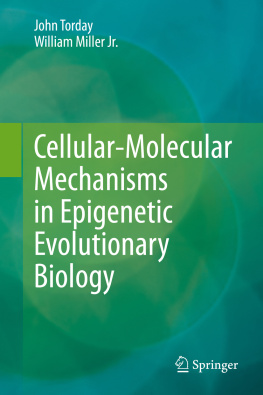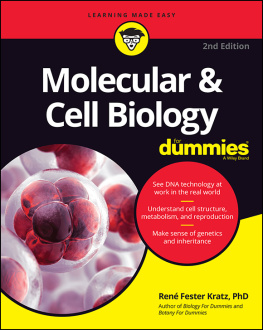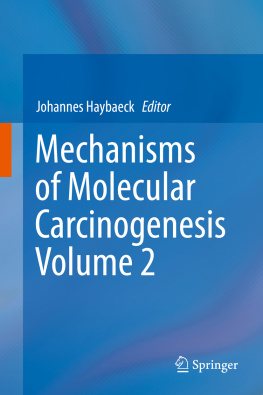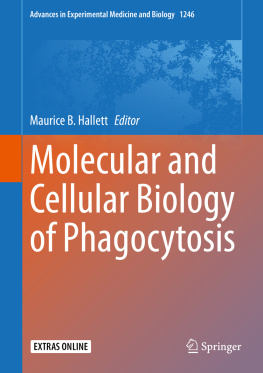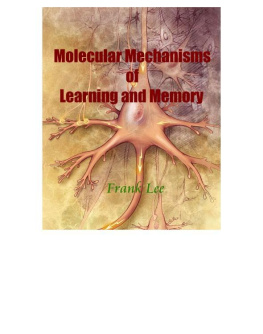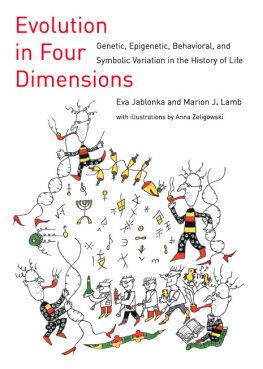Cellular-Molecular Mechanisms in Epigenetic Evolutionary Biology
Here you can read online Cellular-Molecular Mechanisms in Epigenetic Evolutionary Biology full text of the book (entire story) in english for free. Download pdf and epub, get meaning, cover and reviews about this ebook. year: 2020, genre: Romance novel. Description of the work, (preface) as well as reviews are available. Best literature library LitArk.com created for fans of good reading and offers a wide selection of genres:
Romance novel
Science fiction
Adventure
Detective
Science
History
Home and family
Prose
Art
Politics
Computer
Non-fiction
Religion
Business
Children
Humor
Choose a favorite category and find really read worthwhile books. Enjoy immersion in the world of imagination, feel the emotions of the characters or learn something new for yourself, make an fascinating discovery.
- Book:Cellular-Molecular Mechanisms in Epigenetic Evolutionary Biology
- Author:
- Genre:
- Year:2020
- Rating:3 / 5
- Favourites:Add to favourites
- Your mark:
- 60
- 1
- 2
- 3
- 4
- 5
Cellular-Molecular Mechanisms in Epigenetic Evolutionary Biology: summary, description and annotation
We offer to read an annotation, description, summary or preface (depends on what the author of the book "Cellular-Molecular Mechanisms in Epigenetic Evolutionary Biology" wrote himself). If you haven't found the necessary information about the book — write in the comments, we will try to find it.
Unknown: author's other books
Who wrote Cellular-Molecular Mechanisms in Epigenetic Evolutionary Biology? Find out the surname, the name of the author of the book and a list of all author's works by series.
Cellular-Molecular Mechanisms in Epigenetic Evolutionary Biology — read online for free the complete book (whole text) full work
Below is the text of the book, divided by pages. System saving the place of the last page read, allows you to conveniently read the book "Cellular-Molecular Mechanisms in Epigenetic Evolutionary Biology" online for free, without having to search again every time where you left off. Put a bookmark, and you can go to the page where you finished reading at any time.
Font size:
Interval:
Bookmark:
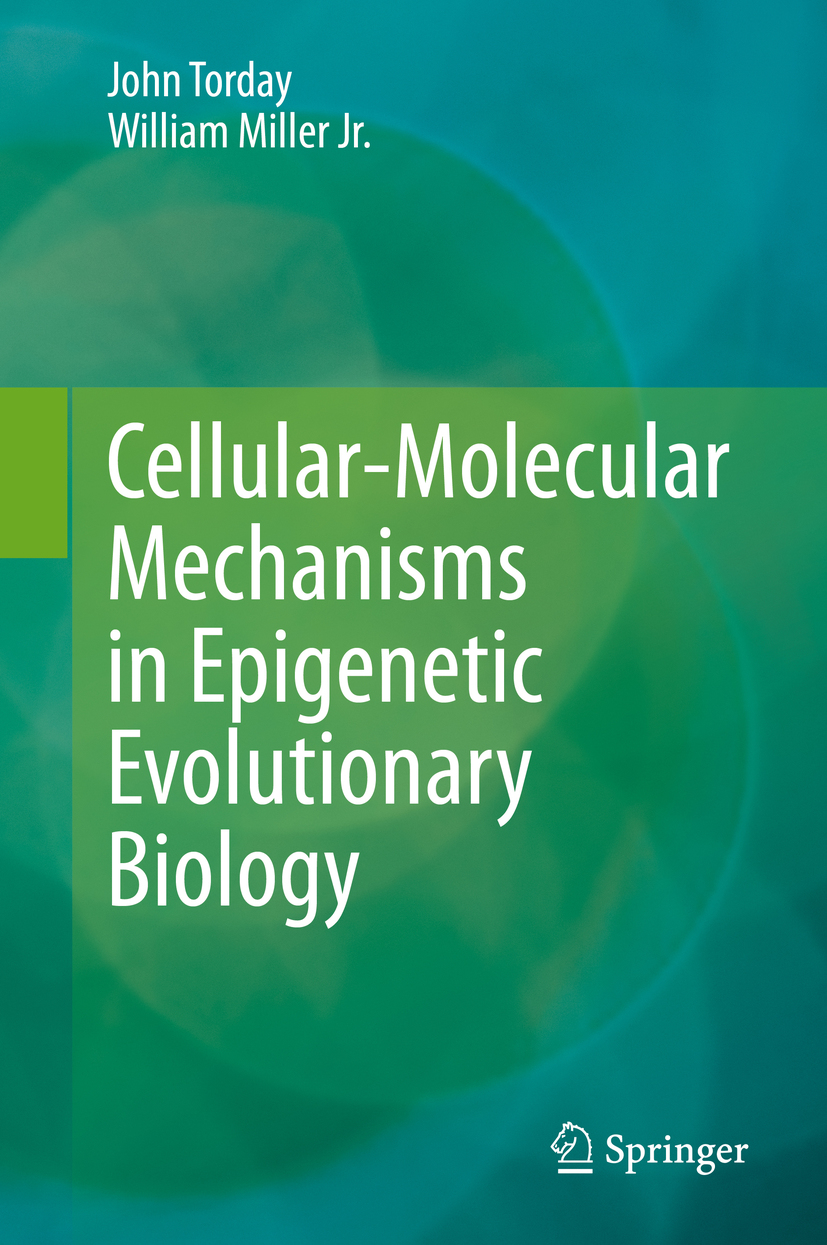

This Springer imprint is published by the registered company Springer Nature Switzerland AG
The registered company address is: Gewerbestrasse 11, 6330 Cham, Switzerland
John S. Torday, to my loving wife Barbara, my daughter Nicole, my son Daniel, his wife Erin, and their daughters Abigail and Delia.
William B. Miller, Jr., to my wonderful wife, Linda, whose patient love sustains me, and our two stellar children, Lauren and Scott.
The following is the result of a peripatetic discussion about the process of evolution by two biologists advantaged by non-formal evolutionary training. It is largely based on our mutual recognition that cell biology has been neglected by the evolutionary biology literature, in combination with the insights gained from superimposing developmental biology on phylogeny, providing a mechanistic rather than a descriptive perspective for evolution as all of biology.
The following is a list of chapters and a brief precis of each for the readers convenience in surveying the contents of the book.
Chapter: The absence of a central theory of biology significantly disadvantages its study compared to its brethren sciences of chemistry and physics. In the twentieth century, evolutionary biology was ruled by Darwinian metaphors. Recent advances in molecular biology, microbiology, and metagenomics permit a new cohesive cellularmolecular alternative approach to evolutionary biology. Through a growing understanding of the complete range of non-random epigenetic influences on genetic expression and a fuller understanding of the complexities of cellular cognition and cellcell communication, biology can be transformed into a predictive science.
Chapter: A highly contentious evolutionary debate has existed since Darwins seminal On the Origin of Species in 1859. For many decades, the arguments were dominated by skepticism regarding the role of natural selection. The rediscovery of the pioneering work on heredity by Gregor Mendel in the early twentieth century led to a general unification of natural selection with the new science of genetics. Although this integrated approach that focuses on selection has gripped evolutionary biology since the mid-twentieth century, continuous adjustments now lead to a new approach through cognition-based cellularmolecular evolution.
Chapter: Although its origin is unknown, cognition is both central to life and embodied within the basic cellular form. It is this crucial property of self-referential awareness that allows all cells and cellular microbes to maintain critical homeostasis. Fundamental cognition enables the purposeful use of information and its communication. It is these essential cellular faculties which underwrite the driving impulse toward cellular cooperation and biological self-organization, and further govern evolutionary changes.
Chapter: The nature of consciousness has been debated for thousands of years. The perspective on evolution taken in this book, that it is serial pre-adaptations based on cellcell communication, offers the opportunity to see consciousness as the sum total of our awareness of our physiology.
Chapter: The homology between the atom and the cell offers the opportunity to level the playing field between the physical and the biological.
Chapter: All cells and microbes are information-dependent and communicate in abundance. However, information is ambiguous in the living state. Information in self-referential circumstances is imprecise due to variances among observers and a requirement that cellular information and its communication must travel distances across a variety of mediums and membranes. Consequently, biological information is constantly subject to sources of degradation. It is this inescapable imprecision that becomes the cornerstone for cellular cooperation, as this is the best cellular means of improving the validity of the information that must be used to maintain homeostasis.
Chapter: Cells assess, communicate, and deploy information through a reiterating cellular information cycle. An exchange of information between two cells is also a transfer of energy between them. Based within thermodynamics, this becomes an obligatory communication to some other self-referential organism. It is this fundamental cycle that underlies cellular cooperation as multicellularity. The need to maximize the quality of the available information leads to its collective assessment, which forms the basis for cellular information management.
Chapter: The genome is no longer considered a sacrosanct blueprint of the living form. Instead, a pluralistic approach through epigenetics and exogenetics is increasingly emphasized. The genome is now considered to be one consequential aspect of the informational interactome of the cell and its crucial cellcell communications rather than a controlling agency. Transposable elements are substantial components of all modern genomes. They are one of the chief contributors to this informational interactome. Consequently, genetic material can now be assessed as part of a common language of information transfer and communication among the cellular domains.
Chapter: A generous array of bioactive molecules and mechanisms participate in the transfer and communication of information beyond genetic material. Each of these contributes to a summation of sensory inputs to the cell, termed its senome. Processes and mechanisms such as primary cilia, a variety of bioactive molecules, the cytoskeleton, electromagnetic fields, connexins, and nanotubes contribute quantum effects that enable complex cellular life.
Font size:
Interval:
Bookmark:
Similar books «Cellular-Molecular Mechanisms in Epigenetic Evolutionary Biology»
Look at similar books to Cellular-Molecular Mechanisms in Epigenetic Evolutionary Biology. We have selected literature similar in name and meaning in the hope of providing readers with more options to find new, interesting, not yet read works.
Discussion, reviews of the book Cellular-Molecular Mechanisms in Epigenetic Evolutionary Biology and just readers' own opinions. Leave your comments, write what you think about the work, its meaning or the main characters. Specify what exactly you liked and what you didn't like, and why you think so.

